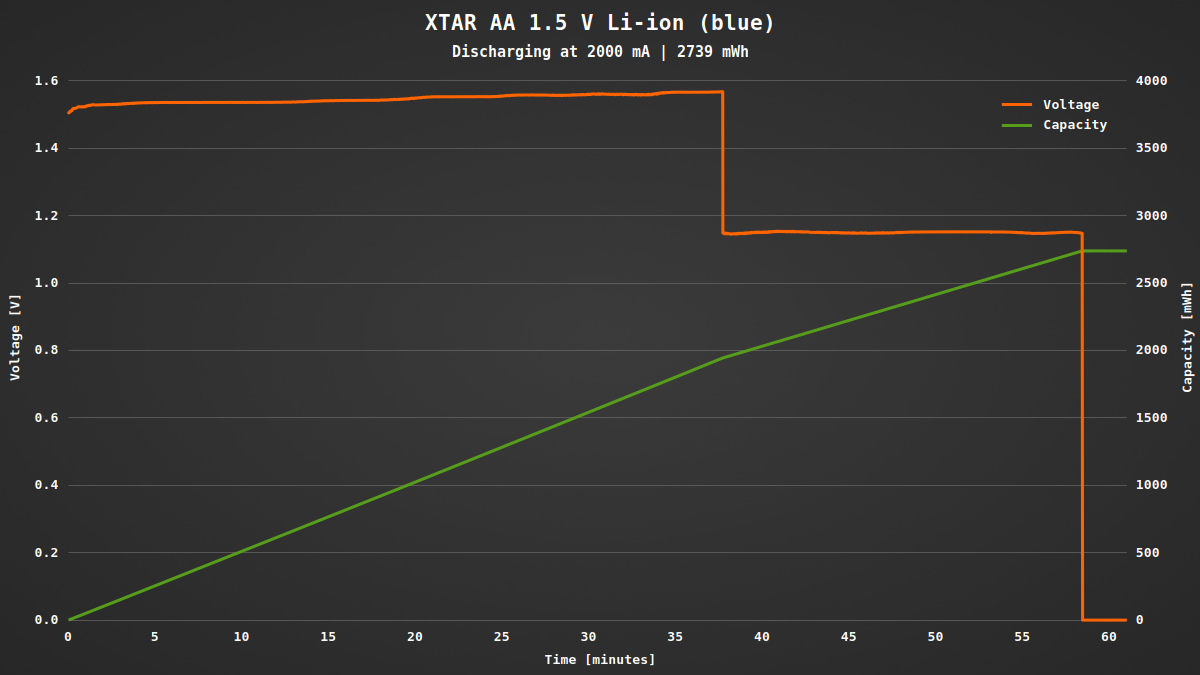【Updated】 More about 1.5V AA/AAA Li-ion batteries’ runtime
Batteries’ runtime may be influenced by a multitude of factors, such as, battery type, device power consumption, voltage and current requirements, self-discharge rate, environmental conditions…
For example, you compare two batteries with the same capacity. One for the rechargeable 1.2V NiMH AA and another for 1.5V Li-ion AA battery. The 1.5V Li-ion battery can maintain a constant 1.5V voltage output. While the voltage of the 1.2V NiMH battery gradually decreases during discharge. They have different discharge voltage curves.
If these two types of batteries are used in low-drain devices, such as alarm clocks, TV remotes, these devices require a relatively broad voltage range, and it can work normally even at lower voltages. However, if a constant 1.5V high voltage is continuously applied, the 1.5V Li-ion battery will be quickly depleted. As for the 1.2V NiMH batteries, the energy will be depleted at a slower rate, and the runtime will be longer.
For some medium or high-power devices, such as Oculus quest controllers and some VR controllers. These devices are sensitive to voltage levels. When the battery voltage drops below 1.1V, the device may determine that the battery is low, resulting in controller disconnection or unstable signal transmission. When using 1.5V Li-ion batteries with a constant voltage output, both overall performance and battery life are improved. While, NIMH doesn’t work in these cases, and alkaline doesn’t last very long at all and becomes expensive, quickly. Their voltages drop rapidly and the device quickly misinterprets it as low battery, leading to shorter battery runtime compared to 1.5V Li-ion batteries.





